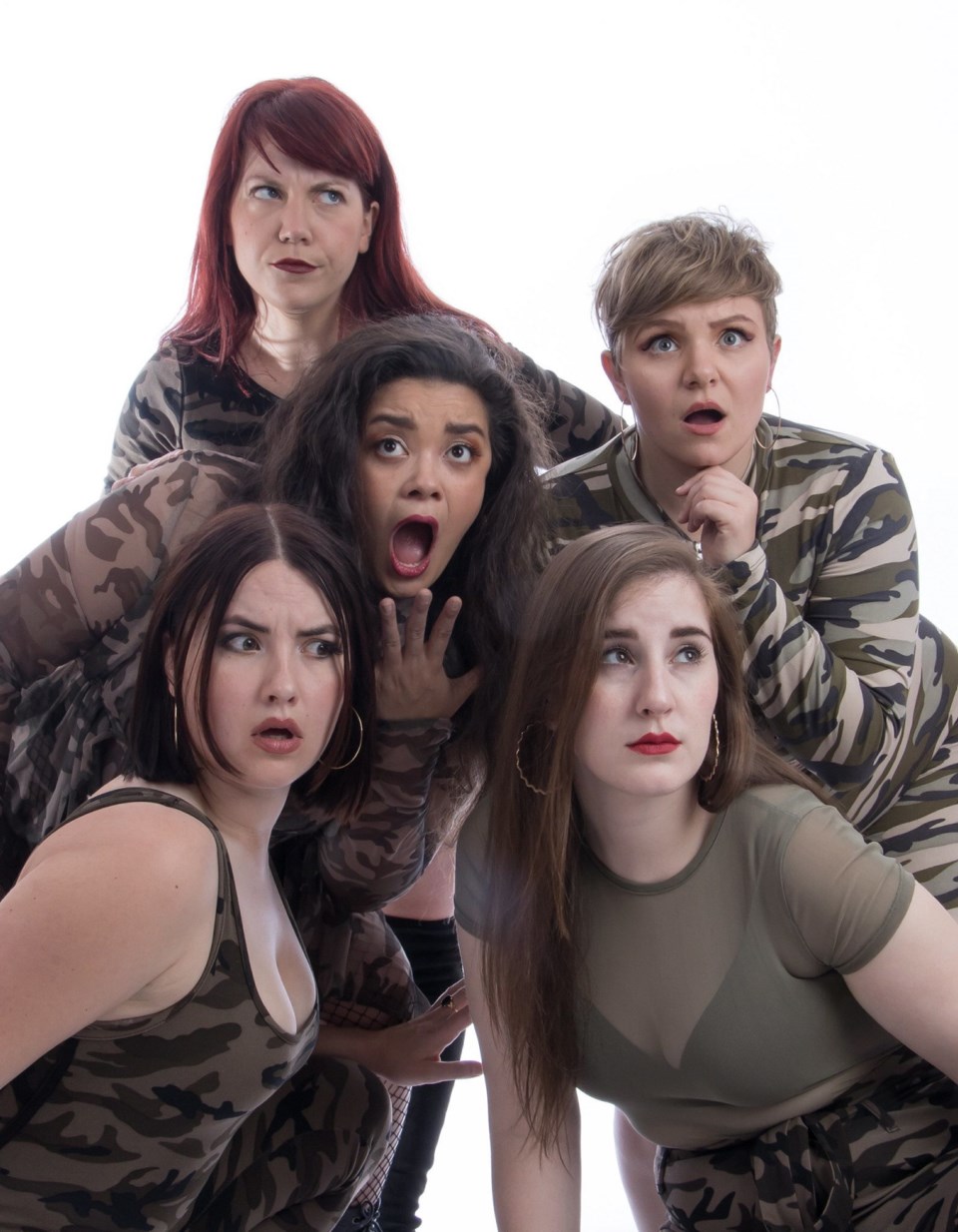ON STAGE
What: Victoria Fringe Festival
Where: Various locations, including Victoria Event Centre, Langham Court Theatre, Metro Studio Theatre and more
When:┬аAug. 21 through Sept. 1
Tickets: $11 and under at the door of each event, with a $6 membership button from Ticket Rocket (1050 Meares St.) or Fringe HQ (1609 Blanshard St.)
Minor adjustments are necessary each year with regards to the operation and planning of the Victoria Fringe Festival, one of the oldest and best-run alternative theatre festivals in the country. But producer Sammie Gough believes there is no reason to overhaul what is traditionally a very successful event, especially one that draws more than 20,000┬аattendees.
тАЬWeтАЩre stewards creating a space for artists to create whatever the heck they want,тАЭ Gough said. тАЬWe make this amazing framework for everyone to engage with the Fringe and this crazy explosion that happens. And then we get out of the way and allow the 47 companies to do their thing.тАЭ
Theatre, comedy, dance and spoken word are among the forms that will be on display at the festivalтАЩs 33rd instalment, which gets underway tonight. The festival offers 12 days of programming from a range of companies in a variety of locations, some of which are unconventional, to put it mildly. Everything from a Jewish synagogue (Congregation Emanu-El on Blanshard Street) to the home of a community acupuncture clinic (Heart & Hands Health Collective on Cormorant Street) are brought into the fold when the Fringe is up and running тАФ a key aspect of the festival, Gough said, as it helps break down barriers for theatre newbies who might be cautious around boisterous audiences at bigger, more established venues such as the Victoria Event Centre or Metro Studio Theatre.
тАЬWeтАЩre aiming to ensure that the Fringe isnтАЩt intimidating,тАЭ she said. тАЬIt should be fun to take a risk and go see a random Fringe show, rather than worry about what youтАЩre wearing or how you should behave.тАЭ
A relaxed performance environment is integral for the health of the festival, Gough added. With a consistent fan base for much of the past decade, the Fringe will never expand if it doesnтАЩt broaden its to appeal to new facets of the community, and considerable work has been done to improve access to participating venues, thanks to the festivalтАЩs accessibility and outreach co-ordinator. Only two venues are not wheelchair accessible, but a number of venues this year will offer sign language interpretation (for those who are deaf or hard of hearing) and surtitles and scripts, which are available to borrow in advance for 14 shows. Patrons with vision difficulties can also have assistance from a тАЬtheatre buddyтАЭ provided by the festival, while personal support workers will be admitted free of charge to all Victoria Fringe performances.
тАЬWe talk a lot about how the Fringe is for everyone, so how the Fringe is accessible and how people interact with it,тАЭ Gough said. тАЬEven though the ideal of the Fringe is set, and we stay true to that, the world that surrounds it is constantly changing.тАЭ
The reputation of the Victoria Fringe as a groundbreaking festival now means that artists travel from as far away as Australia, Germany and the United Kingdom. Even the most seasoned performers struggle to cover their costs. Sales of the $6 Fringe button (which is required to attend a performance) helps event producers the Intrepid Theatre Company Society offset some of its costs, but the admission from each performance (generally $11) goes directly to the performers.
A successful show can be quite profitable, which is why inner-festival communication тАФ i.e. buzz тАФ has become one of the trademarks of Fringe festivals worldwide.
Gough loves the instant sense of community which springs up around the Fringe, a good portion of which involves attendees sharing their opinions whenever and wherever possible, from critiques over coffee to raves during show lineups. тАЬThe whole city embraces this explosion of live theatre, which is pretty unique to our city. People who may not go to theatre year-round come out of the woodwork, and they are so excited. The Fringe goodwill manifests each year. It humbles me.тАЭ
Participating artists know the value of a recommendation, or even a meaningful exchange, so fans will often have the opportunity to meet the performer prior to or following the show they have just paid to see. That isnтАЩt something which happens, especially free of charge, in other mediums. тАЬThere is an unconventional nature to the Fringe,тАЭ Gough said. тАЬThe fact you can chat with an artist in a lineup and ask them why they were inspired to make that show, that personal connection is pretty unique. There is no artist-audience divide.тАЭ
Now into its third decade, it is up to Gough and the team at the Intrepid Theatre Society to shepherd the festival into the future, and adapt to an ever-changing artform. Changes are always afoot, but the philosophy of the Victoria Fringe is not expected to deviate from its unique vision, which has served the festival well on its way to becoming one of the most-loved annual events in the city.
тАЬThe whole point of the Fringe is not to be some stuffy institution,тАЭ Gough said. тАЬItтАЩs to be an out there and punk, on the edge, and embracing the weird. Every time a new batch of artists gets into the festival, the lesson weтАЩve learned from previous Fringes are taken in, but the vision totally stays.тАЭ



